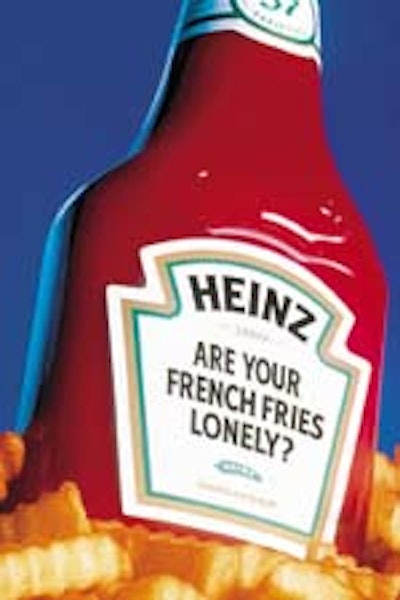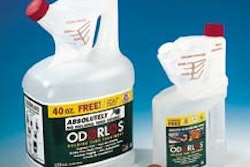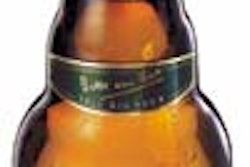What’s now being called the “trap cap” is the most obvious of a variety of new improvements in how Pittsburgh-based H. J. Heinz brings its Ketchup to consumers. An 18-month-long development project with cap-maker Seaquist Closures (Mukwonago, WI) means consumers will no longer have to contend with the annoying watery discharge that often first emerges from squeezable plastic bottles of ketchup.
The objective of the project was to look at all aspects of the packaging to see what parts could be functionally improved. The bottle and label were evaluated, but remain virtually the same, says Mike McMahon, senior manager of research and development for Heinz. The cap and liner, he says, proved most appealing to improvements.
“We’ve had an ongoing issue with ‘syneresis,’ the natural separation of ingredients that causes water to puddle at the top,” says Brendan Foley, senior brand manager for Heinz Ketchup.
“It’s a problem that’s not unique to ketchup. We’ve had the issue all along. In fact, all ketchup products have it, and it’s something consumers told us they’d love to have us eliminate or reduce.”
The trap cap, which is likely to be renamed when it’s promoted to consumers, is a more complex flip-top cap and liner that will offer consumers a number of advantages:
• The most important is a new, taller domed deck on the cap that serves as a reservoir to trap the water that’s left on top of the denser product when the bottle is stored upright. When the bottle is inverted and squeezed for use, a short tube descending from the orifice discharges the product, not the water.
• The inner-seal liner has an improved heat-seal coating that adheres to the land of the bottle to make it easier for the consumer to remove with the pull-tab, without compromising the seal integrity.
• The taller cap now sports “Heinz 57” embossed into its top to add an extra measure of merchandising and brand identification.
• The new cap, dome and tube combination improves the “suck-back” function of the cap after the squeeze has been released. This reduces the chance of the product being cut off and remaining on the deck of the cap. The materials make the product easier to use and reduces the need to wipe off the cap after use.
• Finally, the new cap is molded with an improved tab and flip-top hinge that requires less lifting force, making it easier for children to open.
The new closures will be appearing on Heinz Ketchup plastic bottles beginning later this month in retail outlets across the country. The 33-mm trap cap is now in production at Heinz on plastic bottle sizes from 24 oz up to 64 oz. Later this summer, a 28-mm trap cap will also be available on the 14-oz plastic bottle.
Promotion begins next month
Because of “normal patterns of trade inventory flow,” consumers shouldn’t expect to see bottles sporting the new cap on all shelves until mid-June, says Foley. That’s also when the new cap will be promoted via advertising, in-store promotion and a violator on bottle labels, he says.
The new closure design has not yet been patented, but McMahon says the company is investigating that possibility. Despite all the functional changes, he says the cap remains a one-piece, injection-molded closure with a living hinge. It’s made of polypropylene.
The main differences between the trap cap and Heinz’s existing cap is the dome and the tube. But the new cap also moves the ?” orifice to the center of the cap’s deck. The change not only enhances the ability to trap the water, but also the cleanliness of the cap by improving the vacuum action that pulls the product back into the bottle when the squeeze is released.
McMahon admits that the 3/8”-long tube has added some complexity, especially for Seaquist, the company that supplies the cap with the inner-seal tamper-evident liner in place. That liner and tab have to be inserted gently enough so that the liner doesn’t press against the tube that could cut it. As well, McMahon tells Packaging World, Heinz had to make some minor modifications to its capping equipment to accommodate the new larger closure. Seaquist declined to talk about the project, citing confidentiality.
Consumer testing
All along the way during development, Heinz and Seaquist performed careful testing, both Heinz spokesmen confirm.
“First, we did a lot of in-house bench and lab testing to verify that the cap and liner would perform as we expected,” Foley points out. Once satisfied, the company then took finished sample packages to consumers for in-home tests. “The objective of this was to identify, on an unaided basis, whether or not the bottle created any issues for consumers,” he says. “We simply asked them if they noticed any improvement in performance of the bottle and cap. We asked if they noticed a cleaner cap, whether they felt it was easier to open, etc. We received very good feedback from this test.”
In addition, the improvements come without an upcharge to consumers. In fact, Foley points out, Heinz resized and repriced its containers last fall, which dropped the cost on a per-ounce basis. The new cap will not affect retail prices, he assures PW.
Foley also reports that the packaging evaluation had international ramifications. Last year, we reported on Heinz’ “global category management” and the first effects it would have on packaging (see PW, April ’99, p. 44 or packworld.com/go/heinz). Foley says the latest international initiative is to standardize on Heinz’ label design, making the shape and color scheme uniform on a worldwide basis.
However, Foley admits that the new cap is more evolutionary than revolutionary. “What better way to experience the great taste of our product than to eliminate the annoyance of the watery stuff?” he asks. “Does this keep consumers up at night? No. The point here is that we’re making our ketchup packaging better and better every day.”



























